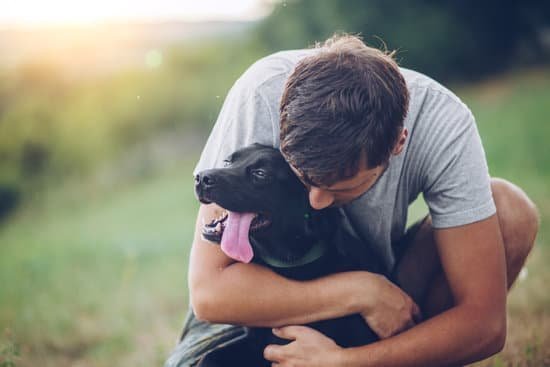Training multiple dogs at once can be a rewarding yet challenging endeavor for pet owners. Understanding the benefits and difficulties of training multiple dogs together is crucial to ensure a successful training experience. In this article, we will explore how to train multiple dogs at once, emphasizing the importance of creating a solid foundation, implementing consistency in training routines, engaging in group training exercises, balancing individual and group training, managing distractions, addressing behavioral issues, and celebrating success.
While training multiple dogs simultaneously may present its own set of challenges, it also offers numerous benefits. Dogs are pack animals by nature, and training them together can help reinforce social bonds between them and strengthen their obedience skills as a group. However, addressing common difficulties such as managing distractions and maintaining individualized attention is essential for effective multi-dog training.
Creating a solid foundation for each dog’s training is the first step towards successful group training. It is important to establish basic obedience skills individually before incorporating them into group activities. Consistency in training routines is also vital for ensuring that all dogs receive fair and equal attention during training sessions. By understanding these key concepts, pet owners can effectively navigate the challenges of multi-dog training while harnessing its many benefits.
Creating a Solid Foundation
When it comes to training multiple dogs at once, it is important to establish a solid foundation for each individual dog. This ensures that they have a strong understanding of basic obedience skills before moving on to group training exercises. Teaching each dog separately allows you to focus on their specific needs and behaviors, setting them up for success in a group setting.
Importance of Individual Training
Individual training is essential for laying the groundwork for training multiple dogs at once. It allows you to address any behavioral issues or challenges that may arise with each dog without the distraction of other animals. By focusing on one dog at a time, you can tailor the training techniques to best suit their learning style and personality.
Building Strong Foundations
Establishing individual training basics sets the stage for successful group training sessions. By ensuring that each dog has a solid understanding of commands such as sit, stay, and come, you can then incorporate these skills into group activities. This foundation also helps prevent confusion or competition between the dogs during joint training exercises.
By prioritizing individual training basics, you are setting your pack up for success when it comes to group activities. Each dog will have the confidence and skills needed to participate in collective training exercises effectively. This approach also paves the way for a smoother transition into more advanced group training tasks down the line.
Consistency Is Key
Implementing a consistent training routine is crucial when it comes to training multiple dogs at once. Consistency ensures that all dogs receive the same level of training and attention, which can help prevent confusion and frustration. Without a consistent routine, it can be challenging to make progress in training multiple dogs simultaneously.
Emphasizing the Need for Consistency
Consistency in training sets clear expectations for all dogs involved. It establishes boundaries and rules that apply to each dog equally, preventing any confusion about what is expected from them. By implementing a consistent routine, you create a structured environment that promotes learning and understanding for all dogs.
Tips for Creating and Maintaining a Consistent Training Routine
To maintain consistency during training sessions, it’s important to have a set schedule for activities such as feeding, walking, and training. All dogs should be trained at the same time whenever possible, reinforcing consistency across the board. Additionally, using consistent verbal cues and hand signals for commands will help ensure that all dogs understand and respond in the same way.
When teaching new behaviors or commands, consistency is key in enforcing these lessons until they become second nature for all dogs. It’s essential to remain patient and not give up on reinforcing good behavior consistently. Regular practice of these routines will lead to better cooperation from all dogs involved.
Group Training Exercises
One of the key group training exercises is walking in a pack. This activity not only helps in improving leash manners but also promotes socialization among the dogs. Start by walking the dogs individually to reinforce leash manners, then gradually integrate them into group walks. Use treats and positive reinforcement to encourage good behavior during the walk. It is important to remain consistent with your commands and reward system to ensure that all dogs understand and follow the rules.
Another beneficial group training exercise is practicing group commands. Teaching commands such as “stay”, “come”, “sit”, or “down” to all the dogs simultaneously can be challenging but rewarding. Begin by working on individual obedience skills before adding more complexity by introducing group commands. Utilize treats, praise, and repetition to reinforce these commands until all dogs respond appropriately.
A third effective group training exercise involves engaging in interactive play sessions with multiple dogs. Incorporating games like fetch, tug-of-war, or hide-and-seek not only provides physical exercise but also encourages teamwork and cooperation among the dogs. Use toys or treats as rewards for good behavior during playtime.
By incorporating these group training exercises into your routine, you can effectively train multiple dogs at once while strengthening their bond with each other and with you.
| Group Training Exercise | Description |
|---|---|
| Walking in a pack | Improves leash manners and promotes socialization among dogs |
| Practicing group commands | Teaches obedience skills and reinforces teamwork among multiple dogs |
| Interactive play sessions | Provides physical exercise, encourages teamwork, and strengthens bonds between dogs |
Individualized Attention
Training multiple dogs at once can be a challenging task, but with the right approach, it can also be incredibly rewarding. Balancing individual and group training is essential to ensure that each dog receives the attention and guidance they need to succeed. When training multiple dogs, it’s important to create a balance between group activities and individualized attention to address each dog’s unique needs.
One way to achieve this balance is by incorporating both group and individual training sessions into your routine. By establishing a consistent training schedule that includes time for both group exercises and one-on-one training with each dog, you can effectively address the varying skill levels and behaviors of your canine companions.
To achieve this, consider the following strategies for balancing individual and group training:
- Create a weekly training schedule that includes designated time for both group activities and individualized sessions with each dog.
- During group training exercises, make an effort to observe each dog’s progress and behavior closely, identifying areas where individualized attention may be needed.
- Incorporate regular check-ins with each dog during group activities to reinforce their understanding of commands and behaviors learned during individual sessions.
By implementing these strategies, you can ensure that all your dogs receive the necessary individualized attention while still benefiting from the socialization and teamwork that comes with group training. Remember that every dog is unique, so it’s crucial to tailor your approach to meet their specific needs while still fostering a positive group dynamic among all your furry friends.
Managing Distractions
Training multiple dogs at once can be a rewarding but challenging experience. One of the biggest obstacles that dog owners face when training multiple dogs together is managing distractions during group training sessions. Dogs are naturally curious and easily distracted, especially when in a group setting. It is important to address this issue effectively in order to have a successful and productive training session.
To manage distractions during group training sessions, it is essential to start with creating a designated training area that is free from potential distractions such as other animals, loud noises, or unfamiliar scents. This will help your dogs stay focused on the training exercises. Additionally, using tools such as visual markers or cones can help establish boundaries and minimize wandering during the session.
Another key strategy for handling distractions during group training sessions is to use high-value treats or rewards to keep your dogs focused on the task at hand. By providing tasty incentives, you can capture your dogs’ attention and maintain their engagement throughout the training session. Consistently rewarding good behavior will reinforce positive habits and reduce the likelihood of distractions derailing the training process.
Furthermore, incorporating regular breaks into your group training sessions can help prevent boredom and restlessness in your dogs, reducing the potential for distractions. Short play or relaxation periods can allow your dogs to decompress and refocus before resuming their training activities.
| Strategy | Description |
|---|---|
| Create a designated training area | Establishing a distraction-free space for effective training sessions |
| Use high-value treats or rewards | Motivating dogs to stay focused through enticing incentives |
| Incorporate regular breaks | Allowing time for rest and relaxation to prevent boredom and maintain focus |
Addressing Behavioral Issues
When training multiple dogs at once, it’s important to anticipate potential behavioral problems that may arise during the process. This is especially true when working with a group of dogs, as they may feed off each other’s energy and behavior. It’s essential to be prepared and equipped to address these issues effectively to ensure successful training for all dogs involved.
To address potential behavioral problems when training multiple dogs at once, it’s crucial to first understand the root cause of the issue. Whether it’s aggression, disobedience, or fear-based behaviors, identifying the underlying reasons can help in implementing the right strategies for correction. Each dog may have unique triggers or reasons for their behavior, so it’s important to assess each one individually.
Once the root cause of a behavioral problem is identified, it’s essential to tailor the training approach accordingly. This may involve modifying the training techniques used for each dog based on their specific needs and behaviors. Providing individualized attention and training for addressing behavioral issues can greatly improve the overall success of training multiple dogs at once.
In addition to addressing individual behavioral issues, implementing group exercises and activities can also help in correcting and managing problematic behaviors. Group training exercises provide an opportunity to work on socialization skills, impulse control, and overall obedience in a controlled environment. Utilizing positive reinforcement techniques during group activities can also help in promoting good behavior and minimizing potential issues when training multiple dogs at once.
- Identify the root cause of any behavioral issues
- Tailor training approaches for each dog based on their specific needs
- Implement group exercises and activities to promote positive behavior
Celebrating Success
In conclusion, training multiple dogs at once can be a challenging but rewarding experience. By establishing a solid foundation of individual training basics, implementing a consistent training routine, engaging in group training exercises, balancing individual and group training, managing distractions, and addressing potential behavioral issues effectively, it is possible to successfully train multiple dogs simultaneously.
The key is to provide each dog with the attention and guidance they need while also creating a cohesive and harmonious training environment for the entire group.
One of the most important aspects of training multiple dogs at once is recognizing and celebrating their achievements and progress. It’s essential to acknowledge the accomplishments of each dog individually while also celebrating their successes as a group.
This not only reinforces positive behavior but also strengthens the bond between all the dogs and their trainer. By incorporating rewards and acknowledgment for both the individual dogs and the group as a whole, you can create a positive training experience that motivates all the dogs to continue improving.
Frequently Asked Questions
Is It Possible to Train Multiple Dogs at Once?
Yes, it is possible to train multiple dogs at once, but it requires patience, consistency, and individual attention for each dog. Using clear commands and positive reinforcement can help manage the training process effectively.
How Do You Train 5 Dogs at Home?
Training 5 dogs at home requires establishing a structured routine and setting aside time for each dog separately. It’s important to focus on basic obedience commands, socialization, and addressing any specific behavior issues.
How Do You Potty Train 3 Dogs at Once?
Potty training 3 dogs at once involves creating a consistent schedule for bathroom breaks, supervising them closely indoors, and using positive reinforcement when they eliminate in the appropriate area. Patience and consistency are key in this process.

Welcome to the blog! I am a professional dog trainer and have been working with dogs for many years. In this blog, I will be discussing various topics related to dog training, including tips, tricks, and advice. I hope you find this information helpful and informative. Thanks for reading!





